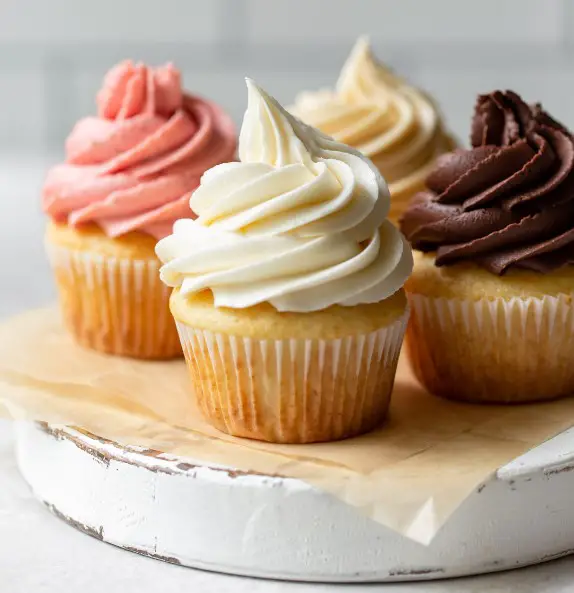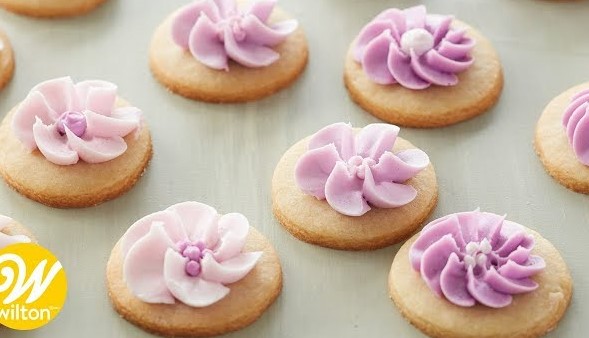In the world of cake decorating, the choice between buttercream and royal icing isn’t just a matter of taste; it’s about crafting the perfect canvas for your culinary art. These two types of icing are staples in the baking industry, each bringing its unique properties and uses to the table. Distinguishing between them is crucial for both novice and experienced bakers aiming to achieve the desired outcome for their creations.
Buttercream and royal icing serve different purposes in cake decoration. Buttercream, known for its creamy texture and rich flavor, is ideal for covering and layering cakes. Royal icing, on the other hand, is a smoother, more solid option that dries hard, making it perfect for detailed piping work and decorations that need to hold their shape over time.
The choice between these icings affects the cake’s appearance, taste, and texture. Buttercream offers a soft, indulgent covering, easily colored and flavored, lending itself to a wide range of designs. Royal icing, with its smooth finish and firm set, is excellent for creating intricate details and textural contrasts. Understanding their distinct characteristics helps bakers decide which icing will best bring their vision to life.

Icing Basics
Ingredients Overview
Icing, a crucial element in cake decoration, combines various ingredients to achieve its unique taste and texture. Common ingredients include:
- Sugar: The primary ingredient, often powdered sugar for smoothness.
- Butter or Margarine: Adds richness and flavor, used extensively in buttercream.
- Milk or Water: Used to adjust the consistency of the icing.
- Egg Whites: Found in royal icing, providing structure and a glossy finish.
- Flavorings: Vanilla, almond, chocolate, or lemon to enhance taste.
- Colorings: Gel or liquid to add visual appeal.
Role in Decoration
Icing not only enhances the cake’s flavor but also transforms its appearance. It:
- Provides a smooth surface for decorations.
- Adds color and texture, bringing designs to life.
- Complements the cake’s flavor, balancing sweetness and richness.
Buttercream 101
What is Buttercream?
Buttercream is a versatile icing used for spreading, filling, and decorating cakes. It primarily consists of butter mixed with powdered sugar, milk, and flavorings, offering a rich and creamy texture.
Types of Buttercream
- American Buttercream: The simplest, made with butter, powdered sugar, milk, and vanilla. It’s sweet and easy to make.
- Swiss Meringue Buttercream: Made by heating egg whites and sugar, then whipping them into a meringue before adding butter. It’s smooth and less sweet.
- Italian Meringue Buttercream: Similar to Swiss, but the sugar is boiled into a syrup before mixing with whipped egg whites and butter. It’s silky and stable.
- French Buttercream: Uses egg yolks for a rich, custardy flavor, making it the most decadent.
Usage and Characteristics
Buttercream is preferred for:
- Its soft, creamy texture that’s easy to flavor and color.
- Covering cakes to provide a smooth base.
- Piping decorations like borders and flowers.
Royal Icing Explained
What is Royal Icing?
Royal icing is a firm-setting icing made from powdered sugar, egg whites, and sometimes lemon juice or cream of tartar. It dries hard, making it perfect for detailed decorations.
Properties
- Dries hard and smooth, ideal for intricate designs.
- Can be thinned for flooding techniques or thickened for piping.
- Preserves well, making it suitable for long-lasting decorations.
Making Royal Icing
Basic recipe:
- Combine powdered sugar and egg whites.
- Beat until thick and glossy.
- Adjust consistency with water or more powdered sugar.
Variations include:
- Adding flavorings like vanilla or lemon for taste.
- Adjusting thickness for different decorating techniques.

Key Differences
Composition Contrast
The main difference between buttercream and royal icing lies in their ingredients. Buttercream is primarily made from butter and powdered sugar, with the addition of milk or cream for smoothness, and occasionally egg whites in meringue-based varieties.
Flavorings such as vanilla, chocolate, or fruit purees can be added. In contrast, royal icing’s base is powdered sugar and egg whites, with water to adjust consistency and sometimes lemon juice or cream of tartar to stabilize and add a slight tartness. This fundamental difference impacts their texture, taste, and application.
Texture and Taste
Buttercream boasts a rich, creamy texture with a sweet, buttery flavor that complements a variety of cakes. It’s soft but stable, offering a velvety mouthfeel. Royal icing, on the other hand, is known for its smooth, glossy finish that hardens upon drying, making it ideal for detailed piping and decorations that require structural integrity. It has a sweet, slightly crisp texture when set, with a simpler sugar taste that can be enhanced with flavorings.
Application Techniques
Buttercream is versatile in application, used for crumb coating, layering, and decorating with a wide range of techniques from simple swirls to complex flowers. It’s easily colored and can be textured to create various effects. Royal icing is preferred for fine detail work like piping, stenciling, and flooding cookies due to its precise and firm set. Its ability to dry hard makes it suitable for stackable decorations and edible jewels.
Choosing the Right Icing
Factors to Consider
When deciding between buttercream and royal icing, consider the type of cake, occasion, and design complexity. Buttercream is ideal for soft, rich cakes like birthday or wedding cakes that require a luxurious finish. It’s perfect for events where the cake’s flavor and texture are as important as appearance. Royal icing suits firmer cakes or cookies that can withstand its weight, preferred for projects needing detailed artwork or durability, like decorated cookies or gingerbread houses.
Buttercream or Royal Icing?
Choose buttercream for cakes needing a smooth finish with soft decorations or when the cake must remain moist. Opt for royal icing for sharp-edged designs, textural contrast, or when decorations need to last longer without refrigeration. Consider your skill level—buttercream may be more forgiving for beginners, while royal icing requires a bit more precision.
Professional Tips
Storage and Handling
Buttercream:
- Store in an airtight container in the refrigerator for up to two weeks; let it come to room temperature and rewhip before use.
- Colored buttercream can fade; avoid direct light to maintain vibrant colors.
Royal Icing:
- Keep in an airtight container at room temperature; it can last up to a month if kept dry.
- To prevent hardening, cover with plastic wrap directly on the surface before sealing the container.
Troubleshooting Common Issues
Buttercream Problems:
- Too soft: Add more powdered sugar to thicken. If too warm, chill for a bit then rewhip.
- Too stiff: Mix in a small amount of milk or cream to soften.
Royal Icing Issues:
- Too thin: Add more powdered sugar to reach desired consistency.
- Not setting: Ensure it’s mixed well and consider adding more egg white or a touch of cream of tartar for stability.
Frequently Asked Questions
Can Buttercream and Royal Icing Be Used Together?
Yes, buttercream and royal icing can be used together on the same cake. Buttercream is often used as a base layer for its smooth, creamy texture, while royal icing can add detailed decorations like piped flowers or borders that require a firmer set. Combining them allows for a mix of textures and styles, enhancing the cake’s visual appeal and complexity.
How Long Do Buttercream and Royal Icing Last?
Buttercream, when stored in an airtight container in the refrigerator, can last up to two weeks. It should be brought to room temperature before use. Royal icing, when kept in a similar container at room temperature, can last up to a month. However, once applied to a cake, the longevity of both icings depends on environmental factors.
Can You Color Royal Icing and Buttercream?
Absolutely, both royal icing and buttercream can be colored using gel-based food coloring. Gel colors are preferred as they provide vibrant hues without altering the consistency of the icing. Start with a small amount and gradually add more until the desired color is achieved. It’s important to note that colors can deepen over time.
Conclusion
Choosing between buttercream and royal icing comes down to the specific needs of your cake design and the sensory experience you aim to create. Buttercream brings a rich, creamy texture and flavor that’s hard to beat for overall cake coverage and comfort. Royal icing, with its smooth, firm set, is unmatched in precision for detailed work and decorations that stand the test of time.
Embracing the strengths of each icing type opens up a world of creative possibilities. Whether you’re a home baker or a professional pastry chef, mastering the application and nuances of both buttercream and royal icing will elevate your cake decorating game, ensuring every creation is not just a dessert, but a masterpiece.
